Do you have a question about the Panasonic CS-U9YWA and is the answer not in the manual?
Step-by-step instructions for inserting batteries into the remote control.
Guide to setting the clock on the remote control for proper operation and timing.
Instructions on how to turn the air conditioner unit on and off.
How to choose between AUTO, COOL, and DRY operating modes.
Steps to adjust the temperature settings for comfort.
Critical actions that are prohibited or mandatory to prevent injury or damage.
Precautions for safe handling and installation of the indoor and outdoor units.
Safety guidelines for the remote control, especially regarding children.
How to control the direction of the air flow from the indoor unit.
Guide to setting fan speed and activating the quiet operation mode.
How to select between powerful cooling and normal operation modes.
Information on using nanoe™™ TECHNOLOGY for air purification.
Instructions for setting ON and OFF timers for automated operation.
Detailed explanation of AUTO, COOL, and DRY operating modes.
Recommended temperature settings for energy efficiency.
How the air flaps operate in different modes.
Behavior of the unit after a power failure.
Explanation of the nanoe™X deactivation process and its duration.
Recommended indoor and outdoor operating temperature ranges.
Steps to safely remove the front panel and air filter for cleaning.
Detailed steps for detaching the front panel of the indoor unit.
Instructions for cleaning the air filter and the nanoe-G generator.
Steps to correctly reattach the front panel after cleaning.
Checks to perform before starting the air conditioner for a new season.
Procedures for preparing the unit for extended periods of non-use.
Important notes regarding regular equipment checks and potential issues.
Common occurrences that are normal operation and not actual faults.
Preliminary checks to perform before seeking professional service.
Steps to take if the remote control is lost or not working correctly.
How to adjust the brightness of the unit's indicator lights.
Procedures for checking the unit after a long period of inactivity.
Steps to prepare the unit for storage and prevent mold growth.
Conditions that require consulting an authorized dealer for repair.
Method to access and identify error codes displayed by the unit.
A comprehensive list of error codes and their meanings.
Guidelines for environmentally responsible disposal of old units and batteries.
Step-by-step instructions for inserting batteries into the remote control.
Guide to setting the clock on the remote control for proper operation and timing.
Instructions on how to turn the air conditioner unit on and off.
How to choose between AUTO, COOL, and DRY operating modes.
Steps to adjust the temperature settings for comfort.
Critical actions that are prohibited or mandatory to prevent injury or damage.
Precautions for safe handling and installation of the indoor and outdoor units.
Safety guidelines for the remote control, especially regarding children.
How to control the direction of the air flow from the indoor unit.
Guide to setting fan speed and activating the quiet operation mode.
How to select between powerful cooling and normal operation modes.
Information on using nanoe™™ TECHNOLOGY for air purification.
Instructions for setting ON and OFF timers for automated operation.
Detailed explanation of AUTO, COOL, and DRY operating modes.
Recommended temperature settings for energy efficiency.
How the air flaps operate in different modes.
Behavior of the unit after a power failure.
Explanation of the nanoe™X deactivation process and its duration.
Recommended indoor and outdoor operating temperature ranges.
Steps to safely remove the front panel and air filter for cleaning.
Detailed steps for detaching the front panel of the indoor unit.
Instructions for cleaning the air filter and the nanoe-G generator.
Steps to correctly reattach the front panel after cleaning.
Checks to perform before starting the air conditioner for a new season.
Procedures for preparing the unit for extended periods of non-use.
Important notes regarding regular equipment checks and potential issues.
Common occurrences that are normal operation and not actual faults.
Preliminary checks to perform before seeking professional service.
Steps to take if the remote control is lost or not working correctly.
How to adjust the brightness of the unit's indicator lights.
Procedures for checking the unit after a long period of inactivity.
Steps to prepare the unit for storage and prevent mold growth.
Conditions that require consulting an authorized dealer for repair.
Method to access and identify error codes displayed by the unit.
A comprehensive list of error codes and their meanings.
Guidelines for environmentally responsible disposal of old units and batteries.
| Cooling Capacity | 2.5 kW |
|---|---|
| Heating Capacity | 3.2 kW |
| Power Supply | 220-240 V, 50 Hz |
| Refrigerant | R32 |
| Weight (Indoor Unit) | 9 kg |
| Energy Efficiency Ratio (EER) | 3.50 |
| Type | Split System |


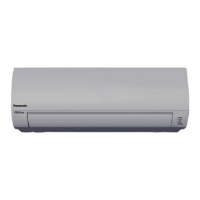
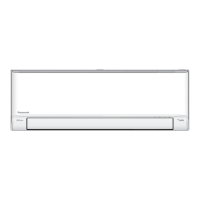
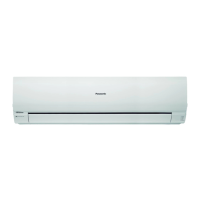
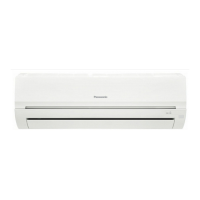
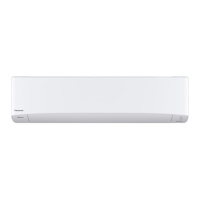





